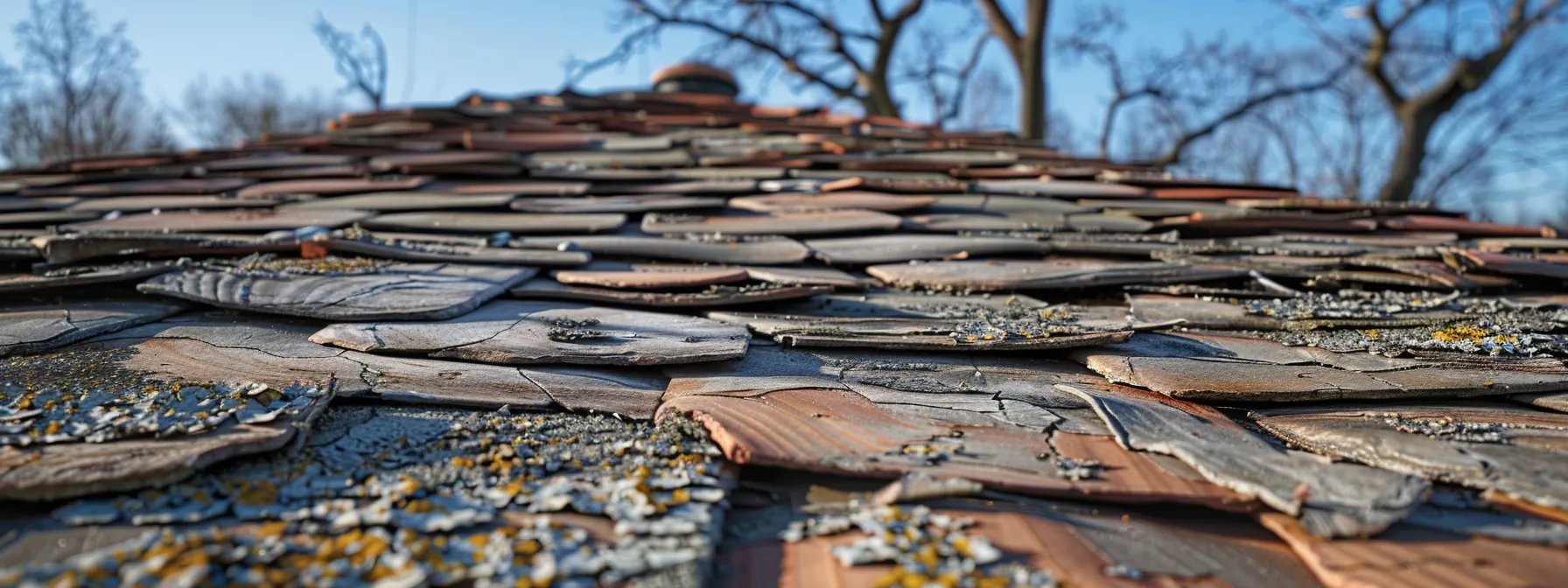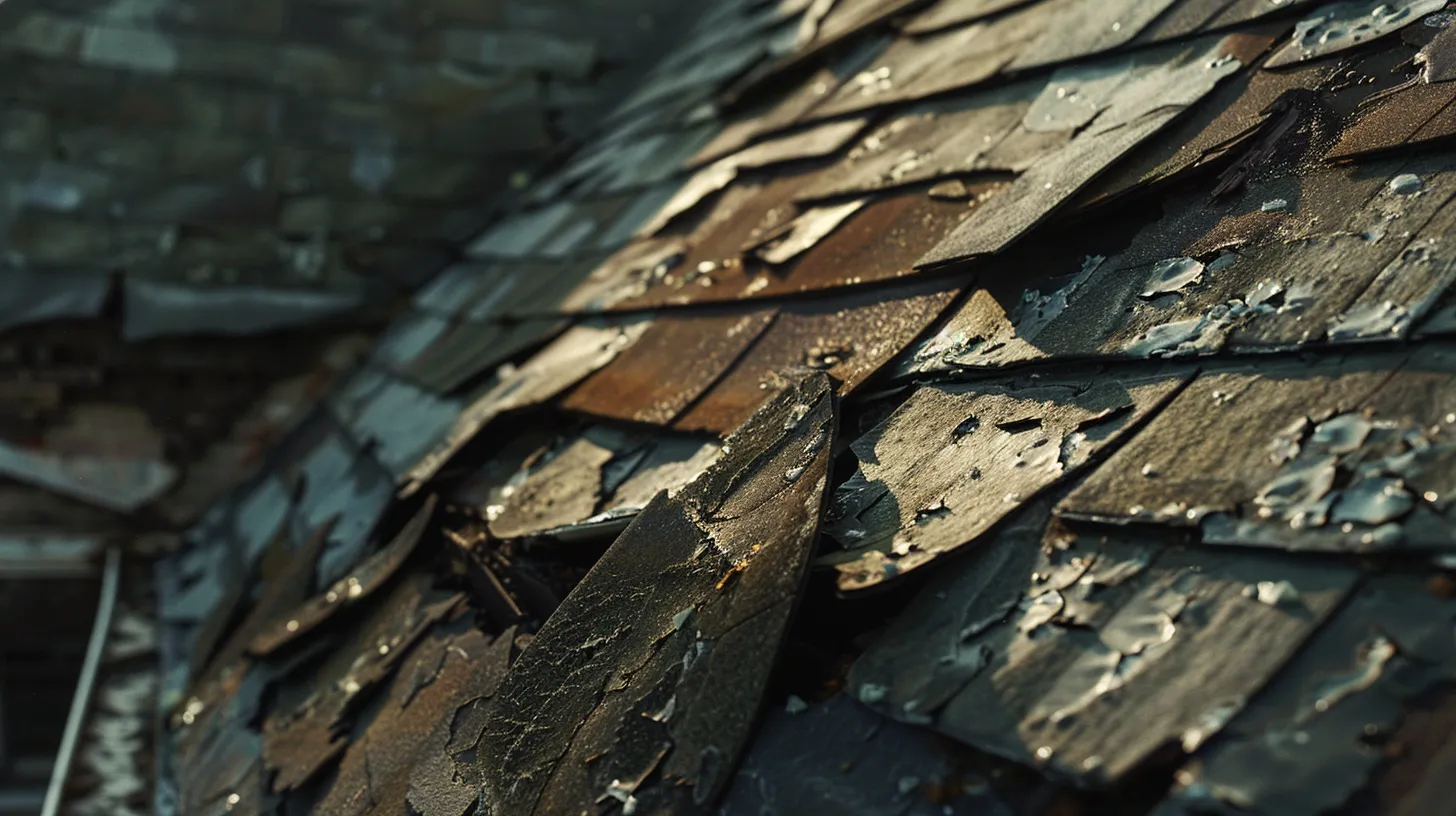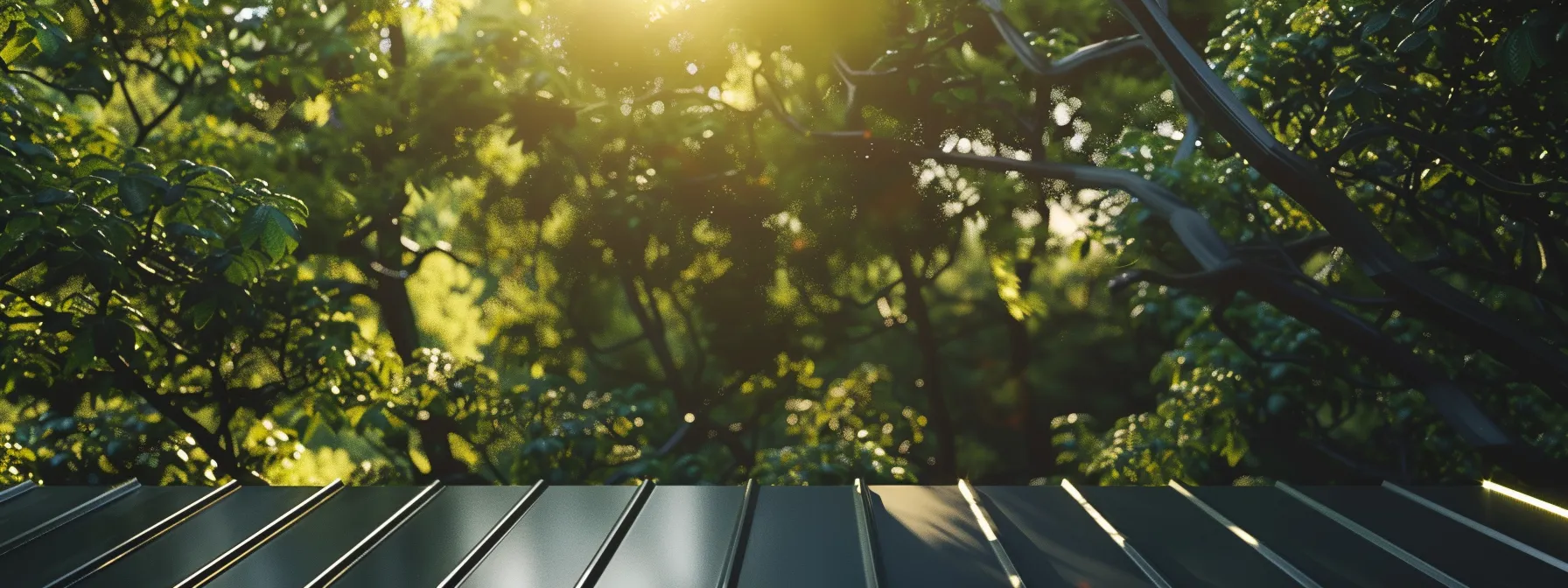
Expert Tips for Choosing the Best Roofing Materials
Is your roof showing signs of wear and tear? Choosing the right roofing material is crucial for your home’s protection and value. This guide will help you navigate the various options available, from popular asphalt shingles to durable metal roofing, elegant slate, and more. We’ll explore key factors like climate, durability, and cost to help you make an informed decision. By the end, you’ll have the knowledge to select the ideal roofing material that meets your needs and enhances your home’s appearance and functionality.
Why Choosing the Right Roofing Material Matters
Selecting the right roofing material is crucial for your home’s value, appearance, and energy efficiency. Whether you choose wood shingles, metal roofing, or traditional roof shingles, your decision impacts longevity and maintenance needs. Consider how each option affects your home’s aesthetic, insulation properties, and durability against elements like rain, ensuring your roof and gutters work together effectively.
Influence on Home’s Value and Appearance
Your choice of roofing material significantly impacts your home’s value and curb appeal. A well-chosen roof enhances the overall aesthetic, complementing your home’s architecture and potentially increasing its market value. Whether you opt for traditional shingles, a modern metal roof, or an innovative green roof system, your selection can make a lasting impression on potential buyers and passersby.
Consider how different materials interact with your home’s design and the surrounding environment. For instance, concrete tiles can provide a sturdy, long-lasting option that withstands high winds, while a green roof not only adds visual interest but also improves energy efficiency. Consulting with a professional roofer can help you navigate these choices, ensuring you select a material that balances appearance with practical benefits like durability and energy savings.
Impact on Energy Efficiency
Your choice of roofing material significantly impacts your home’s energy efficiency. Asphalt shingles, while popular and cost-effective, may not provide optimal insulation compared to other options. For flat roofs, specialized materials can reflect sunlight and reduce heat absorption, leading to lower cooling costs in summer.
Consider materials that enhance longevity and withstand harsh weather conditions like hail and snow. Metal roofing, for example, offers excellent durability and energy efficiency, reflecting solar radiation and potentially reducing your energy bills. By selecting the right roofing material, you can improve your home’s thermal performance and reduce long-term energy costs.
Longevity and Maintenance Considerations
When selecting roofing materials, consider their longevity and maintenance requirements. Steel roofing offers exceptional durability and minimal upkeep, while tile roofs can last for decades with proper care. Wood shingles provide a natural aesthetic but require regular maintenance to prevent water damage and deterioration.
Solar shingles offer a unique combination of energy efficiency and longevity, potentially reducing your electricity costs over time. However, they may require specialized maintenance. Consider your climate, budget, and long-term goals when choosing a roofing material:
- Assess your local weather conditions
- Evaluate your budget for initial installation and ongoing maintenance
- Consider your home’s architectural style
- Weigh the potential energy savings of different materials
- Factor in the expected lifespan of each option
Key Factors in Selecting Roofing Materials
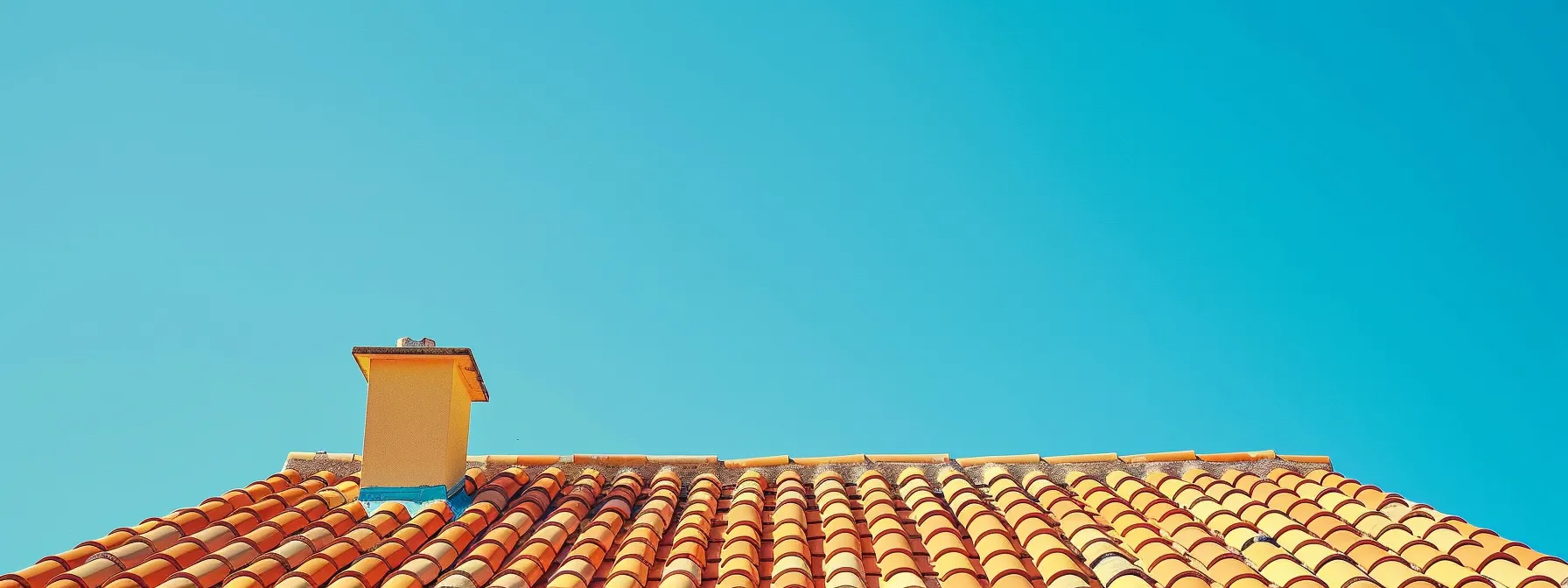
When selecting roofing materials for your house, consider key factors such as climate, roof slope, local building codes, budget, and environmental sustainability. These elements significantly impact the durability, price, and performance of your roof. From traditional roof tiles to modern fiberglass options, each material offers unique benefits. Understanding these factors ensures you choose an environmentally friendly and cost-effective roofing solution that meets your specific needs.
Climate and Weather Conditions
Your local climate and weather conditions play a crucial role in selecting the right roofing materials for your house. In areas with heavy rainfall, prioritize materials with excellent waterproofing properties, such as copper or terracotta tiles, to protect your home from water damage. Consider the roof pitch when choosing materials, as steeper slopes may require different options than flatter roofs.
Sustainability is another important factor to consider when selecting roofing materials. In hot climates, opt for reflective materials that can help reduce energy costs by keeping your home cooler. For colder regions, choose materials with good insulation properties to maintain indoor temperatures and improve energy efficiency. Consider the following factors when selecting roofing materials based on your climate:
- Annual rainfall and snowfall amounts
- Average temperatures and temperature fluctuations
- Exposure to UV radiation and intense sunlight
- Frequency of extreme weather events like hurricanes or hailstorms
- Local wind patterns and their potential impact on roofing materials
Roof Slope and Architectural Design
Your roof’s slope and architectural design significantly influence your choice of roofing materials. Steeper slopes allow for more options, including asphalt shingles and clay tiles, while low-slope or flat roofs may require specialized membrane roofing systems. Consider how different materials complement your home’s style and affect the warranty offered by manufacturers.
The architectural design of your house also plays a crucial role in material selection. For example, modern homes might benefit from sleek metal roofing or photovoltaic systems that blend seamlessly with the design. Traditional homes may look best with classic materials like wood shakes or slate. Remember to factor in the ultraviolet resistance of materials, especially if your roof receives significant sun exposure.
Local Building Codes and Restrictions
Local building codes and restrictions play a crucial role in your roofing material selection. These regulations ensure your roof meets safety standards and complements the architectural style of your neighborhood. Consider how different materials, such as membrane roofing or systems that harness renewable energy, align with local guidelines and impact your home’s beauty.
You must also factor in specific requirements for fire resistance, wind uplift, and sunlight reflection when choosing roofing materials. Some areas may have restrictions on certain types of roofing to maintain a cohesive community aesthetic. Before making a final decision, consult with local authorities or a professional roofer to ensure your chosen materials comply with all relevant codes and restrictions:
- Research local fire safety requirements for roofing materials
- Check for any restrictions on roof color or reflectivity
- Verify if there are limitations on renewable energy installations
- Ensure your chosen material meets wind resistance standards
- Confirm if there are any historical preservation guidelines affecting your roof design
Budget and Cost Implications
Your budget plays a crucial role in selecting roofing materials for your home. While high-end options like slate or copper offer exceptional durability and aesthetics, they come at a premium cost. Consider more affordable alternatives such as asphalt shingles or metal roofing, which provide good performance at a lower price point. Remember to factor in long-term costs, including maintenance and potential energy savings, when evaluating different roofing options.
When budgeting for your roofing project, consider the following factors:
- Material costs for roofing and siding
- Labor expenses for hiring a roofing contractor
- Additional building materials needed for installation
- Potential energy savings from improved home roofing
- Long-term maintenance and replacement costs
Environmental Sustainability
When considering roof replacement, prioritize environmentally sustainable materials to reduce your carbon footprint and enhance your home’s energy efficiency. Opt for roofs made from recycled or recyclable materials, such as metal or rubber, which can significantly lower the roof replacement cost and extend the life expectancy of your roofing system. These materials often withstand extreme weather conditions better, ensuring longevity and reduced waste.
Consider installing cool roofs that reflect more sunlight and absorb less heat, improving your home’s energy performance. These roofs can lower cooling costs and mitigate urban heat island effects. When evaluating roofing options, look for products with Energy Star certification or high solar reflectance index (SRI) values:
- Choose recycled or recyclable roofing materials
- Opt for cool roofs to improve energy efficiency
- Look for Energy Star certified products
- Consider the solar reflectance index (SRI) of materials
- Evaluate the overall environmental impact of your roofing choices
Comparing Popular Roofing Materials
When selecting roofing materials for your house, consider their lifespans, durability against storms and mold, installation processes, and aesthetic options. Compare popular choices like ceramic tiles and solar energy systems for efficiency. This section examines how different materials perform in various conditions, their installation requirements, and the styles available to complement your home’s design.
Lifespans and Durability Ratings
When considering roofing materials for your home improvement project, you must evaluate their lifespans and durability ratings. Materials like polyvinyl chloride (PVC) offer excellent resistance to moisture and leaks, potentially reducing long-term expenses. Compare the expected lifespans of different options to ensure you’re making a cost-effective choice for your home.
Consider how various roofing materials perform under different weather conditions and their ability to withstand wear and tear. Some materials may offer superior protection against UV rays, while others excel in moisture resistance. Evaluate these factors alongside your local climate to select a roofing material that provides the best long-term value and protection for your home:
- Assess material lifespans and warranty offerings
- Compare resistance to moisture, UV rays, and extreme temperatures
- Evaluate impact resistance for areas prone to hail or falling debris
- Consider fire ratings and local building code requirements
- Factor in maintenance needs and potential repair costs
Installation Processes and Requirements
When planning your roof renovation, consider the installation processes and requirements for different materials. Each option, from traditional shingles to modern metal roofing, demands specific techniques and expertise. Factor in your home’s architecture and the condition of your chimney when selecting a roofing material, as these elements can significantly impact the installation process.
Before installation, schedule a thorough inspection to assess your roof’s current state and identify any potential issues. This step is crucial, especially if you live in an area prone to severe weather. Understanding the installation requirements will help you prepare for the project and ensure a smooth, efficient renovation process:
- Evaluate your roof’s structure and support system
- Consider the weight of different roofing materials
- Assess the need for additional underlayment or insulation
- Plan for proper ventilation and drainage systems
- Account for any special tools or equipment required for installation
Aesthetic Styles and Options
When selecting roofing materials, consider the aesthetic styles and options that complement your home’s architecture. From traditional asphalt shingles to modern plastic or mineral-based alternatives, you have a wide range of choices to enhance your home’s curb appeal. Consult with a general contractor to explore how different materials, including sheet metal roofing, can transform your attic space and overall home design.
Your roofing material choice affects not only your home’s exterior but also its interior ambiance. For instance, skylights made from durable plastic can brighten your attic while maintaining energy efficiency. Consider how different textures and colors of roofing materials can create visual interest and complement your home’s siding and landscaping:
- Evaluate color options for different roofing materials
- Consider texture variations and their impact on your home’s appearance
- Assess how roofing materials complement existing exterior elements
- Explore innovative designs, such as solar tiles or green roofs
- Factor in how roofing choices affect natural light in your attic space
Exploring Asphalt Shingles
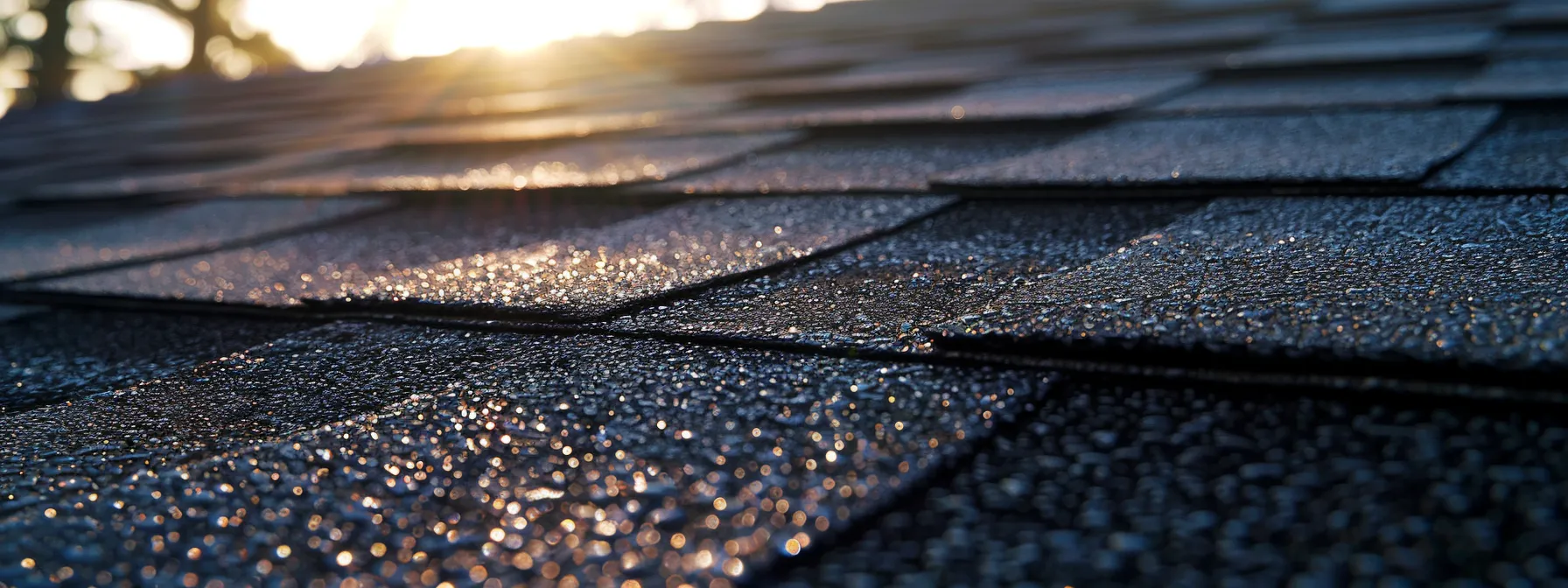
Asphalt shingles offer versatility and affordability for your roofing needs. This section examines the types available, their benefits and limitations, and maintenance requirements. You’ll learn how these shingles impact curb appeal, noise reduction, and potential for solar power integration. We’ll also discuss their lifespan and compatibility with synthetic rubber underlayments to help you make an informed decision.
Types of Asphalt Shingles Available
When exploring asphalt shingles for your roof, you’ll encounter three main types: 3-tab, dimensional, and luxury. 3-tab shingles offer a lightweight, cost-effective option with a flat appearance, while dimensional shingles provide added depth and a more aesthetic curb appeal. Luxury shingles, the heaviest option, mimic the look of slate or wood shakes, enhancing your home’s appearance while offering superior protection.
Each type of asphalt shingle offers unique benefits in terms of weight, fire resistance, and durability. Dimensional and luxury shingles typically provide better protection against wind uplift and impact from hail or falling debris. Some manufacturers incorporate fire retardant materials or reflective granules to improve energy efficiency. Consider your local climate and budget when selecting the most suitable asphalt shingle type for your home.
Benefits and Limitations of Asphalt Shingles
Asphalt shingles offer numerous benefits for your roofing needs, including affordability, ease of installation, and a wide range of color options to enhance your home’s curb appeal. These shingles provide good fire resistance and can withstand moderate wind speeds, making them suitable for many climates. You’ll also appreciate their sound-dampening properties, which can help reduce external noise in your home.
However, asphalt shingles have limitations you should consider. They typically have a shorter lifespan compared to some other roofing materials, potentially requiring replacement sooner. In extreme weather conditions, such as high winds or hail, asphalt shingles may be more susceptible to damage. Additionally, they offer less insulation than some alternative materials, which could impact your home’s energy efficiency.
Maintenance Needs and Lifespan Expectations
Asphalt shingles require regular maintenance to maximize their lifespan, which typically ranges from 15 to 30 years. You should inspect your roof annually, removing debris and checking for damaged or missing shingles. Address any issues promptly to prevent water damage and extend your roof’s life.
While asphalt shingles are durable, their lifespan can be affected by factors like climate, ventilation, and installation quality. In harsh weather conditions, you may need to replace your asphalt shingle roof sooner. Consider investing in higher-quality shingles and professional installation to enhance durability and potentially reduce long-term maintenance costs.
Advantages of Metal Roofing
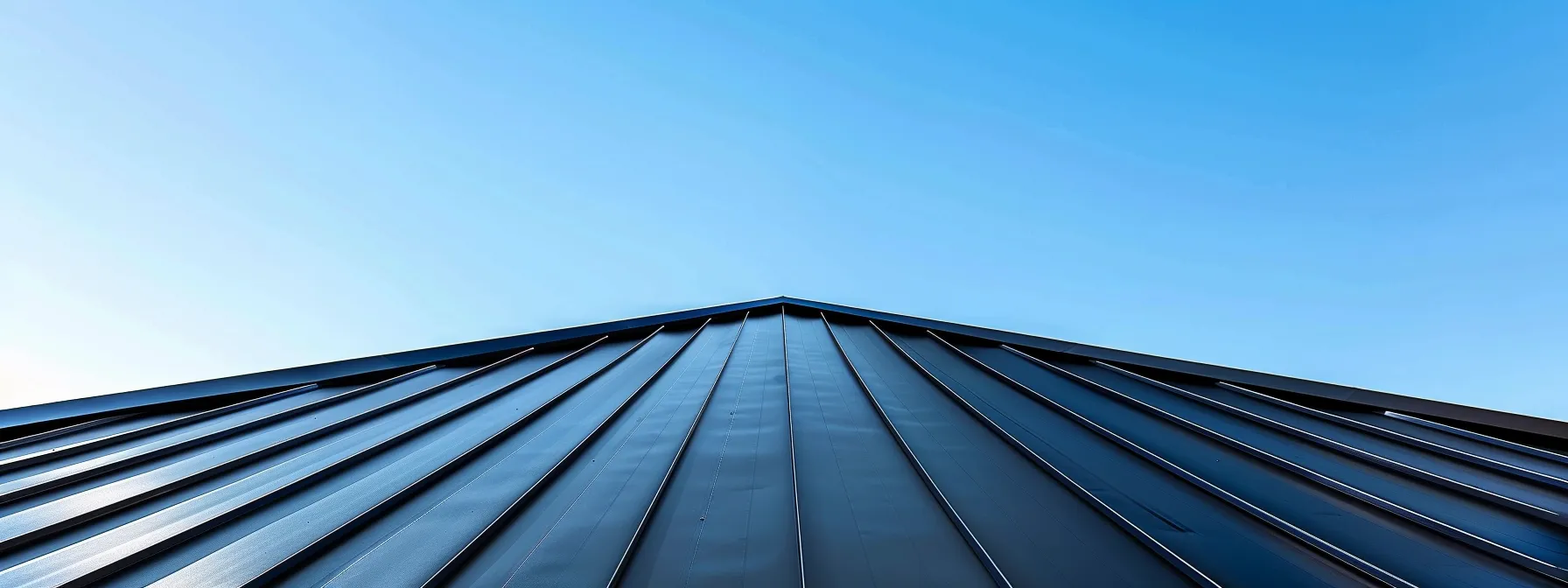
Metal roofing offers numerous advantages for your home, including durability, energy efficiency, and weather resistance. This section explores different metals used in roofing, their resistance to harsh weather, and energy-saving properties. You’ll learn about installation considerations and cost factors to help you make an informed decision for your roofing project.
Different Metals Used in Roofing
When considering metal roofing for your home, you’ll encounter various options including steel, aluminum, copper, and zinc. Steel roofing, often coated with zinc or aluminum for enhanced durability, offers a cost-effective solution with excellent strength. Aluminum roofing provides lightweight, corrosion-resistant properties, making it ideal for coastal areas exposed to salt air.
Copper and zinc roofing materials offer premium choices for your home, boasting exceptional longevity and unique aesthetic appeal. Copper develops a distinctive green patina over time, while zinc weathers to a beautiful blue-gray hue. These high-end options not only elevate your home’s appearance but also provide superior protection against the elements, potentially lasting for decades with minimal maintenance.
Weather Resistance and Durability
Metal roofing offers exceptional weather resistance and durability for your home. You can count on its ability to withstand harsh conditions, including high winds, heavy rain, and hail. Most metal roofs can last 50 years or more with proper maintenance, far outlasting traditional asphalt shingles.
Your metal roof’s durability extends to fire resistance, helping protect your home from airborne sparks and embers. Its strength also means less damage from falling branches or debris during storms. This resilience translates to lower long-term costs, as you’ll likely need fewer repairs and replacements over your home’s lifetime.
Energy Efficiency and Reflectivity
Metal roofing offers significant energy efficiency benefits for your home. The reflective properties of metal surfaces help deflect solar radiation, reducing heat absorption and lowering your cooling costs during summer months. This energy-saving feature can lead to substantial reductions in your electricity bills over time.
Additionally, many metal roofing materials are designed with special coatings that enhance their reflectivity and emissivity. These coatings further improve the roof’s ability to reflect sunlight and release absorbed heat, maintaining a cooler indoor temperature. When selecting a metal roof, consider options with high solar reflectance index (SRI) values for maximum energy efficiency:
- Choose light-colored metal roofing for better heat reflection
- Look for Energy Star certified metal roofing products
- Consider cool metal roofing options with specialized coatings
- Evaluate the potential energy savings over the roof’s lifetime
- Factor in your local climate when selecting a metal roof’s reflectivity
Considerations for Installation and Cost
When considering metal roofing installation, you must factor in the specialized skills required. While the initial cost may be higher than traditional materials, metal roofs offer long-term value through durability and energy savings. Consider obtaining quotes from multiple contractors to ensure competitive pricing for your project.
The weight of metal roofing can impact your home’s structural requirements. You should assess whether your existing roof frame can support the new material or if reinforcements are necessary. Additionally, factor in the potential for future energy savings and increased home value when evaluating the overall cost of metal roofing installation.
Understanding Clay and Concrete Tiles
Clay and concrete tiles offer exceptional durability and aesthetic appeal for your roof. These materials provide long-lasting performance and unique style options. Consider their weight and structural requirements when choosing between clay and concrete tiles. This section explores their durability, installation needs, and design possibilities to help you make an informed decision for your home.
Durability and Long-Term Performance
Clay and concrete tiles offer exceptional durability for your roof, often lasting 50 to 100 years with proper maintenance. These materials withstand extreme weather conditions, including high winds and hail, providing superior protection for your home. Their dense composition also makes them highly resistant to fire, enhancing your property’s safety.
You’ll appreciate the low maintenance requirements of clay and concrete tiles. Unlike some roofing materials, they don’t rot, warp, or become infested with insects. Their color stability means they retain their appearance over time, maintaining your home’s curb appeal for decades. However, you should have your roof inspected periodically to ensure any cracked or broken tiles are promptly replaced to prevent water damage.
Weight and Structural Requirements
When considering clay or concrete tiles for your roof, you must account for their significant weight. These materials typically weigh between 900 to 1,200 pounds per square (100 square feet), which is considerably heavier than asphalt shingles. Your home’s structure needs to be capable of supporting this additional load, so you may need to reinforce your roof framing before installation.
Before proceeding with clay or concrete tile installation, have a professional assess your home’s structural integrity. They’ll evaluate your roof’s pitch, decking, and support system to ensure it can handle the weight. In some cases, you might need to upgrade your roof’s structure, which can add to the overall project cost but is essential for safety and longevity.
Style and Design Possibilities
Clay and concrete tiles offer you a wide array of style and design possibilities for your roof. You can choose from various shapes, including flat, curved, or interlocking patterns, to create a unique look that complements your home’s architecture. These tiles come in a range of colors, from traditional terracotta to modern grays and blues, allowing you to customize your roof’s appearance to match your aesthetic preferences.
Beyond color and shape, you can explore different textures and finishes to enhance your roof’s visual appeal. Some clay and concrete tiles mimic the appearance of wood shakes or slate, providing a high-end look at a more affordable price point. You can also mix different tile styles or colors to create distinctive patterns or highlight architectural features, adding character and value to your home.
Wood Shingles and Shakes Explained
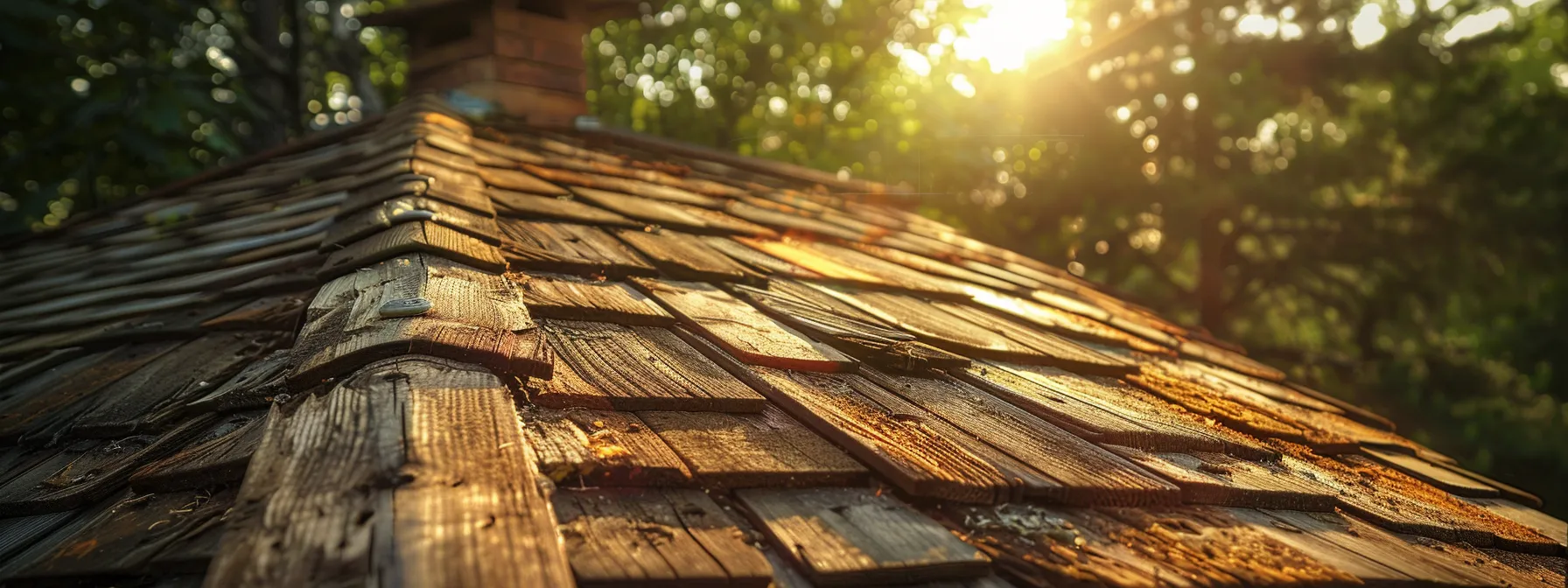
Wood shingles and shakes offer a natural, rustic appeal for your roof. This section explores the differences between shingles and shakes, their aesthetic qualities, and important maintenance considerations. You’ll learn about fire safety measures and how to preserve the beauty of these traditional roofing materials for your home.
Differences Between Shingles and Shakes
When choosing between wood shingles and shakes for your roof, you’ll notice distinct differences in appearance and texture. Wood shingles are machine-cut, resulting in a uniform thickness and smooth surface, giving your roof a neat, tailored look. Shakes, on the other hand, are hand-split, creating a more rustic, textured appearance with varying thicknesses that add depth and character to your home’s exterior.
You’ll find that wood shingles typically offer better water resistance due to their smoother surface and tighter fit. Shakes, while more prone to moisture retention, provide superior insulation properties. When selecting between the two, consider your home’s architectural style and your local climate to determine which option best suits your needs and preferences.
Natural Aesthetic Appeal
Wood shingles and shakes offer your home a natural, timeless aesthetic that’s hard to replicate with other materials. As they age, these roofing options develop a beautiful silver-gray patina, enhancing your home’s character and curb appeal. This organic look can significantly boost your property’s value, especially in areas where traditional or rustic architecture is prized.
You’ll find that wood roofing materials blend seamlessly with various architectural styles, from colonial to contemporary. Their warm tones and textures create a harmonious connection between your home and its natural surroundings, making them particularly appealing if you live in a wooded area or desire a more organic aesthetic for your property.
Maintenance and Fire Safety Considerations
When choosing wood shingles or shakes for your roof, you must prioritize regular maintenance to ensure longevity and fire safety. Inspect your roof annually for signs of wear, rot, or insect damage, and replace any damaged shingles or shakes promptly. Apply a water-repellent preservative every few years to protect the wood from moisture and UV damage, extending its lifespan and maintaining its aesthetic appeal.
To address fire safety concerns, consider treating your wood roofing materials with fire-retardant chemicals. These treatments can significantly improve your roof’s resistance to fire, potentially lowering your insurance premiums and enhancing your home’s safety. Additionally, keep your roof clean of debris and overhanging branches, as these can increase fire risk. By combining proper maintenance with fire safety measures, you can enjoy the beauty of wood roofing while minimizing potential hazards.
Benefits of Slate Roofing
Slate roofing offers exceptional longevity and durability for your home. This section explores the factors contributing to slate’s long-lasting performance, the challenges associated with its installation, and a cost analysis to help you determine its value. You’ll gain insights into why slate remains a premium roofing choice despite its higher initial investment.
Longevity and Durability Factors
Slate roofing offers exceptional longevity for your home, often lasting 100 years or more with proper care. Its durability stems from its natural composition, making it resistant to weathering, fire, and extreme temperature fluctuations. You’ll find that slate’s density and low water absorption rate contribute to its ability to withstand harsh environmental conditions, maintaining its integrity far longer than many alternative roofing materials.
When you choose slate for your roof, you’re investing in a material that requires minimal maintenance over its lifetime. Its resistance to mold, fungus, and pests means you’ll spend less time and money on upkeep. Additionally, slate’s durability translates to improved energy efficiency for your home, as its thermal mass helps regulate indoor temperatures, potentially reducing your heating and cooling costs over time.
Installation Challenges
When installing slate roofing, you’ll face unique challenges due to its weight and specialized handling requirements. Your home’s structure must be capable of supporting the significant load of slate tiles, which can weigh up to 1,500 pounds per square. This often necessitates additional reinforcement of your roof’s framing, adding to the overall project cost and complexity.
You’ll need to hire experienced professionals for slate roof installation, as it requires specific skills and tools. The process is more time-consuming and labor-intensive compared to other roofing materials, which contributes to higher installation costs. Additionally, slate’s brittleness demands careful handling during installation to prevent breakage. Consider these factors when planning your slate roofing project:
- Assess your home’s structural capacity to support slate’s weight
- Budget for potential structural reinforcements
- Hire contractors with specific experience in slate roofing
- Allow for extended installation timelines
- Factor in specialized tools and equipment costs
Cost Analysis and Value Proposition
When considering slate roofing for your home, you must weigh its high initial cost against its long-term value. While slate tiles are more expensive upfront compared to traditional materials, their exceptional durability and lifespan of 100 years or more can offset this investment over time. You’ll likely save money on repairs and replacements, as slate roofs require minimal maintenance and rarely need to be replaced within a homeowner’s lifetime.
The value proposition of slate roofing extends beyond its longevity. You’ll benefit from increased energy efficiency due to slate’s natural insulating properties, potentially lowering your heating and cooling costs. Additionally, slate roofs can significantly enhance your home’s curb appeal and resale value, making them an attractive option if you’re planning to sell in the future. Consider these long-term benefits when evaluating the cost-effectiveness of slate for your roofing project.
Exploring Synthetic Roofing Options
Synthetic roofing materials offer innovative alternatives to traditional options for your home. This section examines various synthetic materials available, comparing them to natural counterparts in terms of durability, cost, and appearance. You’ll learn about their environmental impact and recyclability, helping you make an informed decision for your roofing project.
Types of Synthetic Materials Available
When exploring synthetic roofing options, you’ll find a variety of materials designed to mimic natural products while offering enhanced durability and cost-effectiveness. Synthetic slate, made from recycled rubber and plastic, provides the aesthetic appeal of natural slate without the weight concerns. Polymer shingles, another popular choice, offer excellent resistance to impact and UV rays, making them ideal for areas prone to severe weather.
You might also consider synthetic cedar shakes, which replicate the look of wood but require less maintenance and offer better fire resistance. These materials come in various styles and colors, allowing you to customize your roof’s appearance to match your home’s architecture. When selecting synthetic roofing, consider the following factors:
- Durability and expected lifespan
- Resistance to weather and environmental factors
- Installation requirements and complexity
- Warranty coverage and manufacturer support
- Environmental impact and recyclability
Comparisons With Natural Alternatives
When comparing synthetic roofing materials to their natural counterparts, you’ll notice significant differences in weight and durability. Synthetic options are typically lighter, reducing strain on your home’s structure and potentially lowering installation costs. They often offer superior resistance to impact, UV rays, and moisture, potentially extending your roof’s lifespan beyond that of natural materials.
You’ll find that synthetic roofing materials generally require less maintenance than natural alternatives. While they may not develop the same aged patina as materials like wood or slate, many synthetic options retain their color and appearance longer, maintaining your home’s curb appeal with minimal upkeep. Consider how these factors align with your long-term roofing goals and maintenance preferences when making your selection.
Environmental Impact and Recycling
When considering synthetic roofing materials, you’ll find that many options offer significant environmental benefits. These materials often incorporate recycled content, reducing waste and conserving resources. Some synthetic roofing products are designed for easy recycling at the end of their life cycle, contributing to a circular economy and minimizing landfill waste.
You can further enhance your home’s sustainability by choosing synthetic roofing materials with high solar reflectance. These products help reduce your home’s energy consumption by reflecting more sunlight and absorbing less heat. When selecting synthetic roofing, consider the following environmental factors:
- Percentage of recycled content in the material
- Product’s recyclability at end-of-life
- Energy efficiency ratings and potential for reducing cooling costs
- Manufacturing process and its environmental impact
- Durability and lifespan, which affect long-term resource consumption
Making the Right Choice for Your Home
Selecting the right roofing material for your home involves assessing your specific needs, consulting with professionals, and balancing cost, durability, and appearance. This section guides you through evaluating your home’s requirements, seeking expert advice, and making informed decisions to ensure your new roof meets both practical and aesthetic goals.
Assessing Your Home’s Specific Needs
When assessing your home’s specific needs for roofing materials, consider your local climate and weather patterns. Evaluate factors like annual rainfall, snowfall, and temperature fluctuations to determine which materials will provide the best protection and longevity for your house. You should also take into account your roof’s pitch and structural support, as these elements can impact your material options and installation requirements.
Examine your home’s architectural style and neighborhood aesthetics to ensure your chosen roofing material complements your property’s overall look. Consider your long-term plans for the house, including potential resale value and energy efficiency goals. By carefully assessing these factors, you’ll be better equipped to select a roofing material that meets your specific needs and enhances your home’s functionality and appearance.
Consulting With Roofing Professionals
When selecting roofing materials for your home, consulting with experienced roofing professionals is crucial. These experts can provide valuable insights into the best options for your specific situation, considering factors like your local climate, building codes, and budget constraints. They can also assess your roof’s current condition and recommend materials that will address any existing issues while enhancing your home’s overall performance and appearance.
During consultations, ask about the pros and cons of different roofing materials, their expected lifespans, and maintenance requirements. Professional roofers can offer detailed cost estimates, including potential hidden expenses, and explain the installation process for various materials. Their expertise can help you make an informed decision that balances durability, aesthetics, and long-term value for your home.
Balancing Cost, Durability, and Appearance
When selecting roofing materials for your house, you must balance cost, durability, and appearance to make the best long-term investment. Consider your budget constraints alongside the expected lifespan of different materials. While some options may have higher upfront costs, their longevity and low maintenance requirements can offer better value over time.
Evaluate how different roofing materials will complement your home’s architectural style and enhance its curb appeal. Look for options that offer a good balance between aesthetics and performance, considering factors such as color retention, weather resistance, and energy efficiency. To make an informed decision, compare the following aspects of various roofing materials:
- Initial installation costs
- Expected lifespan and warranty coverage
- Maintenance requirements and associated expenses
- Energy efficiency and potential utility savings
- Impact on home resale value
Frequently Asked Questions
What are the key factors to consider when selecting roofing materials?
When selecting roofing materials, consider durability, climate compatibility, energy efficiency, aesthetics, and cost. Factor in the roof’s slope, local building codes, and your home’s structural support. Choose materials that offer long-term value, weather resistance, and complement your home’s style.
How do asphalt shingles compare to metal roofing in terms of durability?
Asphalt shingles are more affordable but less durable than metal roofing. Metal roofs typically last 40-70 years, while asphalt shingles last 15-30 years. Metal roofing offers better weather resistance and energy efficiency, but comes at a higher initial cost.
What are the advantages of using clay or concrete tiles for roofing?
Clay and concrete tiles offer durability, longevity, and aesthetic appeal for roofing. They provide excellent insulation, fire resistance, and weather protection. These tiles are low-maintenance, environmentally friendly, and can increase your home’s value, making them a worthwhile investment for homeowners seeking quality roofing solutions.
How do wood shingles differ from synthetic roofing options?
Wood shingles offer a natural, rustic appearance and can last up to 30 years with proper maintenance. Synthetic roofing options, like asphalt or metal, are typically more durable, fire-resistant, and require less upkeep. However, they may lack the aesthetic charm of wood shingles.
Which roofing material offers the best long-term value for homeowners?
Metal roofing offers excellent long-term value for homeowners. With superior durability, energy efficiency, and lifespans of 50+ years, metal roofs provide lasting protection and potential energy savings. Although initially more expensive, their longevity and low maintenance needs make them cost-effective over time.
Conclusion
Selecting the ideal roofing materials for your house is a crucial decision that impacts your home’s durability, energy efficiency, and aesthetic appeal. By carefully considering factors such as climate, budget, and architectural style, you can choose materials that offer the best balance of performance and value for your specific needs. Consulting with roofing professionals and thoroughly researching your options will help you make an informed decision that enhances your home’s protection and appearance for years to come. Ultimately, investing time and effort in selecting the right roofing materials will contribute to your home’s longevity, comfort, and overall value.


